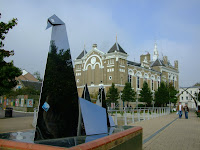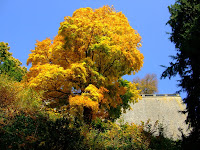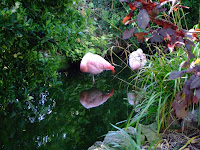
One tends to think of the M25 dividing London from the rest of the UK and that it is built-up city inside and country outside, but there are many lovely villages, spaces and places to discover inside the M25.
We began the day at Staines, once the home of the linoleum industry as it was invented there. It is a pleasant town on the banks of the Thames with a traditional Saturday market in the pedestrianised High St.

A short drive downstream is the cute village of Laleham with many fine old buildings. After a walk around Laleham we continued on downstream to Sunbury-on-Thames to have a look at the Walled Garden and the Millennium Tapestry exhibited there.

The walled garden is all that remains of a grand estate and is a very pleasant space with a highly recommended tea-room, if you don’t object to huge slices of mouth-watering cakes.

The Millennium Tapestry was a 6-year labour of love by the local ladies who created a montage from their individual efforts depicting buildings, scenes and historical events from the local area.

Retracing our path a little, we crossed the Thames at Walton-on-Thames to catch a 45-minute boat trip around what is a man-made island created when the Desborough diversion channel was created in the 1930s to improve navigation and shorten the trip between Weybridge and Walton.

It was a beautiful day to be out on the Thames and there were many boaties from plastic canoes, skiffs, narrowboats, to the big flash launches out enjoying the day as well.
Back on terra firma we headed west to Claremont Landscape Garden, which we had first visited in 2001.

A few kilometres southwest of Claremont is Whiteley Village, an extended care community for the elderly. Years ahead of its time at inception, it was a 1907 bequest of a wealthy London department store owner, it now consist of more than 300 listed buildings.
Finally, it was time to tangle with the M25 for the crawl home.





































